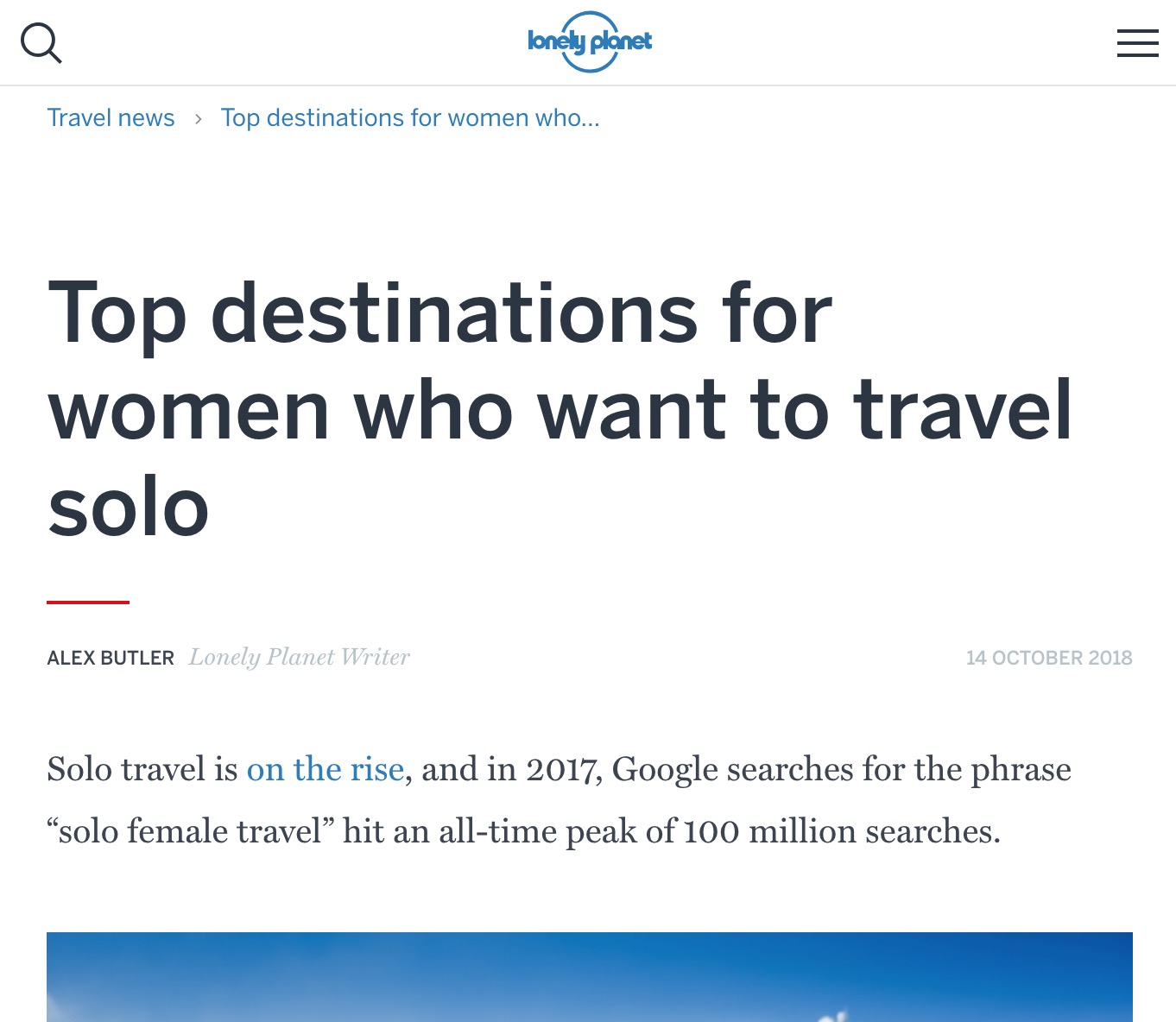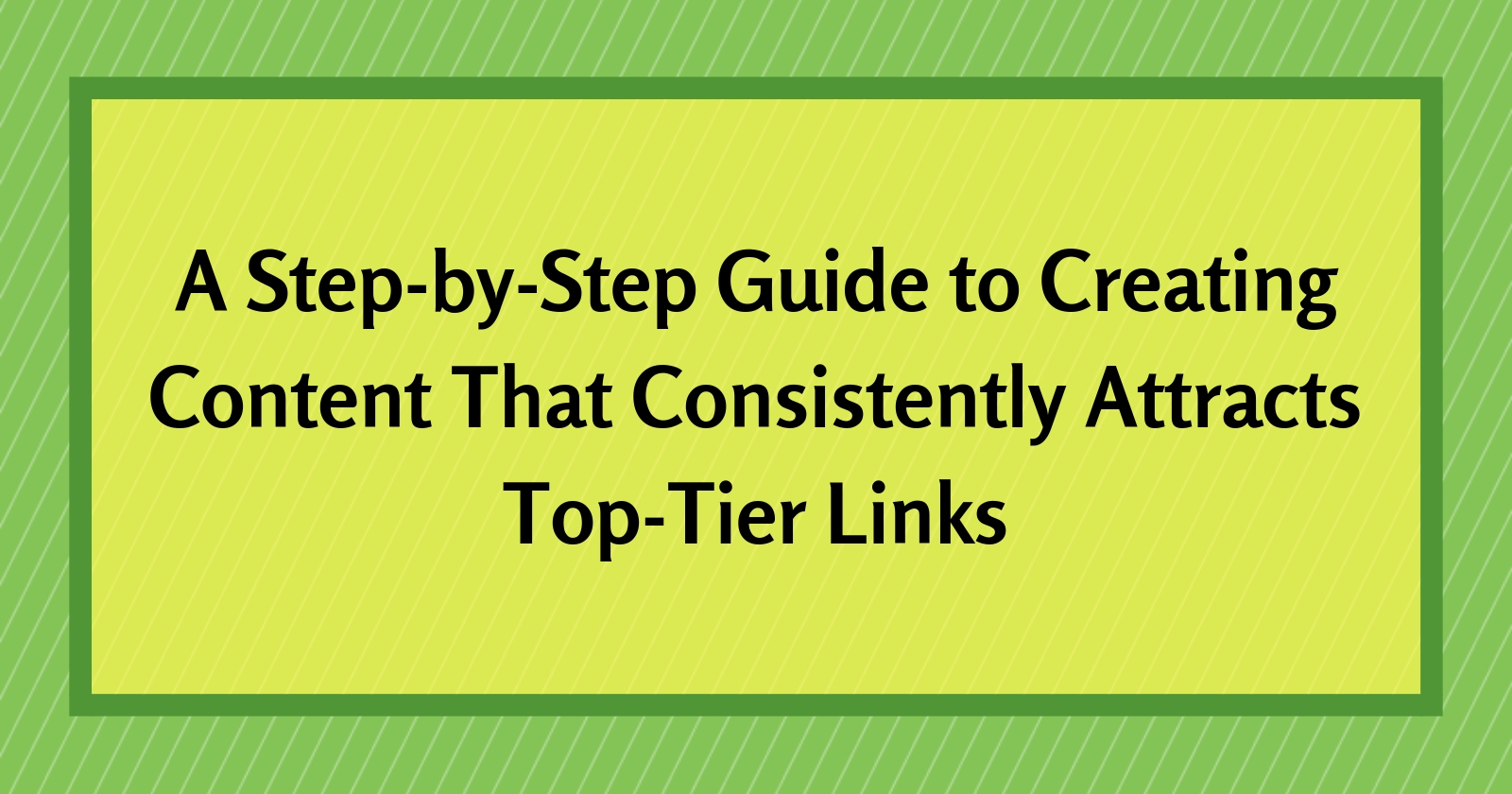If you want to earn top-tier links, you can’t cut corners on the content you create.
You have to do everything the right way.
First, the bad news: it isn’t easy to get links on relevant, quality sites.
But the good news is that means fewer people are doing it the right way.
As long as you’re ready to put in the work, there is a greater opportunity than ever to be had.
This step-by-step guide will show you how to create content that consistently attracts high quality links.
This Process Works
This guide isn’t based on theory or best practices, but on actual real world results.
In the past three months, we’ve pitched five pieces to Lonely Planet (one of the most influential sites and best links in travel) that have followed this process.
The result?
Coverage for every single one.
This has led to projects that have all gone into double figures in the number of linking domains they’ve achieved, many of which have been on top-tier publications that have had the biggest SEO impact.
The example I use below is on 84 pieces of coverage and counting.
Here’s exactly what we did.
1. Research
Before we get anywhere near the brainstorming stage, we are constantly on the lookout for other pieces of content that perform well and attract lots of links and coverage.
We specialize in travel, but we look far and wide at projects in a wide variety of industries to get a sense of what is working and then look for angles we can apply in travel.
This is an ongoing process.
The further in advance you can do this ahead of actually having to come up with your own idea, the better.
Tip: Monitor industries outside of your own, as it will give you ideas that work and you can twist for your own niche, rather than just rehashing the same stuff all your direct competitors are doing.
2. Ideation
Now you can start to consider what your twist will be.
How will you apply your idea to your own (or your client’s) brand?
The key is to identify what the core idea is behind what’s working and then put a spin on it.
Try to combine your spin with a prominent, newsworthy topic – and then sync that with a popular content format.
Here are some types of content we’ve seen be particularly successful lately:
- Maps.
- Posters.
- Data-driven indexes.
- Interactive content.
- Quizzes.
For the example we’re using here, we decided to create an index of the best locations for solo-traveling women.
Solo female travel is a popular theme at the moment. It fit well with the brand and we managed to find some data sources that would allow us to create a representative index.
3. The Data
Depending on what type of content you choose to go for, you’ll then have to delve into collecting some information.
If you’re creating posters like these then you’ll have less raw data to collect, but will need to have a quirkier take on a topic to gain traction. I loved the controversial angle these posters used, but that isn’t something available to everyone, especially if you’re working with clients.
If you’re running something data driven then you’ll have to be prepared for some legwork hunting data down and then collecting and collating it.
As we’d chosen to go with a data-driven index we needed to track down enough sources of information to give us a true picture of what the best destinations for solo female travel actually are.
Fortunately, some good old-fashioned Google searches will usually surface some fantastic and useful information sources.
Searching for general statistics websites and seeing what information they already have available is also a good approach. This can actually help as a starting point from which you can identify and mold a new idea.
Of course, if you have a significant amount of budget available you can spend that carrying out your own surveys and polls to collect brand new data to use.
However, this can be costly and you never know how good the responses will be.
Tip: If budget is an issue, try to avoid specifying exactly what data you want to find in the first instance. You’ll often find it isn’t available, and without it, your idea is dead in the water.
It’s better to come up with a general concept, then spend some time searching for data sources that would fit and molding the idea around the data that is available.
4. The Format
Once you have your dataset ready you need to come up with the best way to present it.
Creating something shiny, fancy, and complicated doesn’t necessarily lead to better results.
If you have good data – and can build a good story around it – then presenting that information in a simple and attractive way can work really well.
Also, it keeps costs to a minimum.
5. The Story
This is what will take your content from good to great.
If you can draw out an interesting angle from your data, or you have built in a good hook to your map or illustrations, then that will put the turbos on your idea and maximize its link potential.
The fact that you have created some nice illustrations or a map is not a story! There must be something beyond the fact that you have just made this thing that draws a journalist in.
- Does it highlight a new trend?
- Is it a prominent topic in the news?
- Does it take a controversial angle on an existing topic?
These are all things that would give you a good story to pitch.
Try and imagine what the headline will be when a journalist covers your story, and then imagine if you would click on that if you saw it on social media.
No? Then try again.
The beauty of data-driven content is that there is almost always a great story and headline in there. For example:
- X Comes Top in New Study
- X Is Most Popular Y
- Here Are the Top X for Y

6. Outreach
If you have a good story then it makes your outreach a whole lot easier.
The only thing you have to do is make sure you’re telling the right people about it.
And, if you followed the steps above, you’ll have the perfect sources for that information.
Remember before we even started brainstorming our ideas we were collecting lots of examples of other successful content?
Well, now we’re going to reverse engineer that content to see who linked to it so we can target the same people.
Think about it. If a journalist covered a story a few months ago, and you’ve created something similar but with a different twist, then there’s a strong possibility they’ll be interested in that, too.
Couple that with a good story and you’ve got a greater chance of outreach success.
Here’s What You Need To Do:
- Put the URL of the successful content piece you’ve found into your favorite link tool and export the links.
- Go through each one and visit the link, recording the journalist who wrote the piece.
- Do a search for that journalist’s name and try to find contact details. Often you’ll find them on Twitter or their own portfolio site, but if not you can use a tool like Hunter.io to find their email address.
- Email the journalist with a personalized pitch. You can read a fantastic guide on good pitching here.
- Follow up if you don’t hear back, but do it politely and manually!
7. The Secret Sauce
Here’s the thing that can help you ramp up the success of your projects and the number of links you get from them. But let’s keep it our little secret, OK? 😉
The key to getting 84 pieces of coverage from your content isn’t pitching 84 sites or 184 or 284 sites. It’s from pitching the right source sites.
A huge number of publications are all desperately looking for things to write about.
And while there are lots of fantastic journalists out there, there are also lots of lazy writers who will just monitor the top 1 percent of outlets and rewrite the stories they cover.
If you can get coverage on just one site amongst that 1 percent, then your nice little piece of content can turn you into the office hero or your client’s best friend forever.
You’ll notice I’ve mentioned Lonely Planet a few times in the article.
Well, guess what? An awful lot of travel publications feed off Lonely Planet as a source for their story ideas.
So if we can pitch a story they love, it will lead to lots more off the back of that initial coverage.
Tip: Work out what the key source sites are in your industry and design your whole idea and content piece around that key publication.
The more targeted you make something to that one publication, or even one specific journalist, the better chance you give yourself of success.
8. The Result
Our Wander Women Index has gained 84 pieces of coverage and 36 links, including Lonely Planet, The Times, Matador Network, APlus, and many other domains with a Domain Rating above 60, which couldn’t be achieved with traditional “link building” approaches.
Referral traffic more than doubled compared to the month previous to the content piece being published and was 25 percent higher than the previous October.
Organic search traffic hit an all-time October high following projects like this and others we have run with the client, much of which is down to the top-tier links that have been gained as a result.
The best part?
We have followed this process for a wide variety of projects and achieved similar results.
This isn’t just a fluke success story. It is being replicated time and time again.
And you can replicate it, too, now that you know how.
Summary
There is still a lot of skepticism about link building.
But you can put this skepticism to bed when you change the concept of link building.
Stop thinking of it as an outdated spammy tactic.
Instead, start thinking about link building as quality marketing, with the key goal being gaining online coverage.
Once you’ve changed your mindset, you’ll see a variety of ways in which you can start getting fantastic links.
This is just one of those ways.
Hopefully, this breakdown will give you confidence that it doesn’t need to be a shot in the dark.
Following a structured process will give you a high chance of consistent success that will result in:
- An extremely strong link profile over time.
- Improved rankings for your commercially orientated terms.
- More traffic from people who want to buy your product or service.
What’s not to like about that?
More Resources:
- Link Building Guide: How to Acquire & Earn Links That Boost Your SEO
- How to Connect Your Content to What Journalists Want for Top-Tier Links
- Does a Journalist Owe You a Link When Covering Your Brand or Story?
Image Credits
Featured Image: Created by author, November 2018
Screenshot taken by author, November 2018





